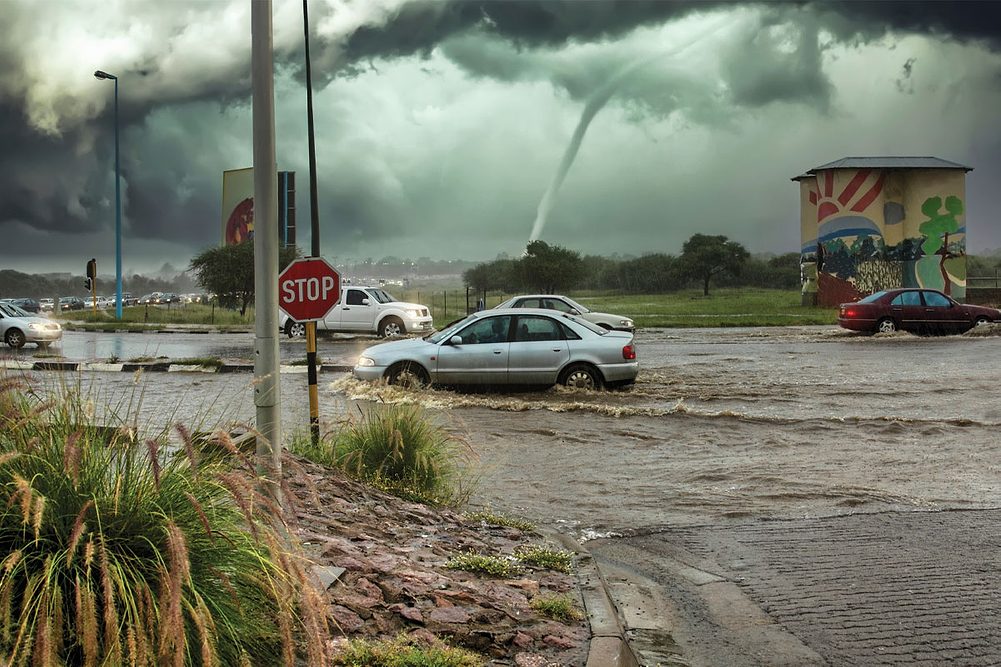KANSAS CITY — Adverse weather was taking a late-season swipe at US crops, ranging from sugar cane, corn, soybeans and spring wheat in the nation’s midsection to produce, nuts and other high-value crops in California.
Highlighting the news last week was Hurricane/tropical storm Hilary, the first such storm to hit California in more than 80 years. After drought for several years, parts of California already were dealing with abundant, and welcomed, rainfall earlier this year that significantly replenished reservoirs and irrigation water supplies. California’s Department of Water Resources indicated rainfall from Hilary had limited additional beneficial effect on water supplies since much was runoff because of the speed and voracity by which it arrived.
But Hilary did bring threats of flooding and wind damage to California’s San Joaquin Valley, a prime agricultural region in the state where harvests of grapes, almonds, walnuts, pistachios, processing tomatoes and other crops were approaching or underway. The storm stayed south of California’s Sacramento Valley and the prime wine grape region in Napa Valley.
Meanwhile, extreme heat and drought were the center of attention for crops from Louisiana and Texas to North Dakota and the Canadian Prairies, the latter of which has had yield-cutting drought much of the growing season.
The “dome” of heat that sent temperatures above 100° F last week was centered over the Corn Belt.
In Louisiana, 100% of sugar cane was in areas of drought, according to the US Department of Agriculture’s Aug. 15 assessment of the US Drought Monitor. The Louisiana sugar cane crop was rated 38% good-to-excellent as of Aug. 20, the lowest for the date since at least 2015. The USDA in the Aug. 11 World Agricultural Supply and Demand Estimates report trimmed 38,000 tons from its July 2023-24 sugar production estimate for Louisiana, and trade sources expect outturn will fall much more.
One agricultural meteorologist said Louisiana sugar cane already was adversely affected by freezes earlier in the year and needed perfect weather to recover, but “summer heat and dryness was punishing,” and “sugar production from Louisiana will be down notably in 2023.”
The winter wheat crop dodged the latest heat event with only Montana, Idaho and Washington with less than 90% harvested as of Aug. 20, according to the USDA.
The heat was catching the spring wheat crop during the heart of harvest, with 39% of the crop combined as of Aug. 20. The six-state good-to-excellent rating was 38%, down from 42% a week earlier and 64% a year ago. The lowest ratings were in Washington (25%), Montana (28%), South Dakota (32%) and North Dakota (39%).
The book still is open for corn and soybeans, but the aforementioned meteorologist said it was late enough in the season that damage from the heat wave would be mitigated. Still, corn kernel sizes and grain quality may be reduced as the crop matures more rapidly in parts of Minnesota, Iowa, Illinois, Kansas and North Dakota that have the lowest subsoil moisture needed to carry the crop through to harvest, he said. Soybeans in the same areas will be stressed by low subsoil moisture during the pod filling stage and may have smaller bean sizes, lower oil content and lower yields. As with last year, crops in the eastern Corn Belt were faring better than those in western areas, although the latter so far was better than a year ago. The corn crop in the 18 major states was rated 58% good-to-excellent as of Aug. 20, down from 59% a week earlier but above 55% at the same time last year. Crop development was near average for the date.
The soybean crop in the top 18 states was rated 59% good-to-excellent as of Aug. 20, unchanged from the prior week and slightly above 57% at the same time a year ago. Crop development was near the five-year average pace.
The heat was expected to break at the end of last week, but forecasts were scant for rain in late August and early September that could give crops a final drink of much-needed water before maturation.
Scouts on the Pro Farmer Midwest crop tour Aug. 21-24 got a firsthand look at corn and soybean crops from Nebraska to Ohio. Reports indicated good but not great crops in the western Corn Belt with definite signs of heat and drought stress on corn. In eastern areas, observations showed better crop prospects than in areas to the west.





